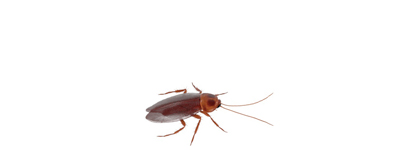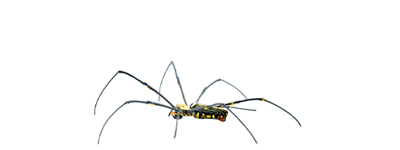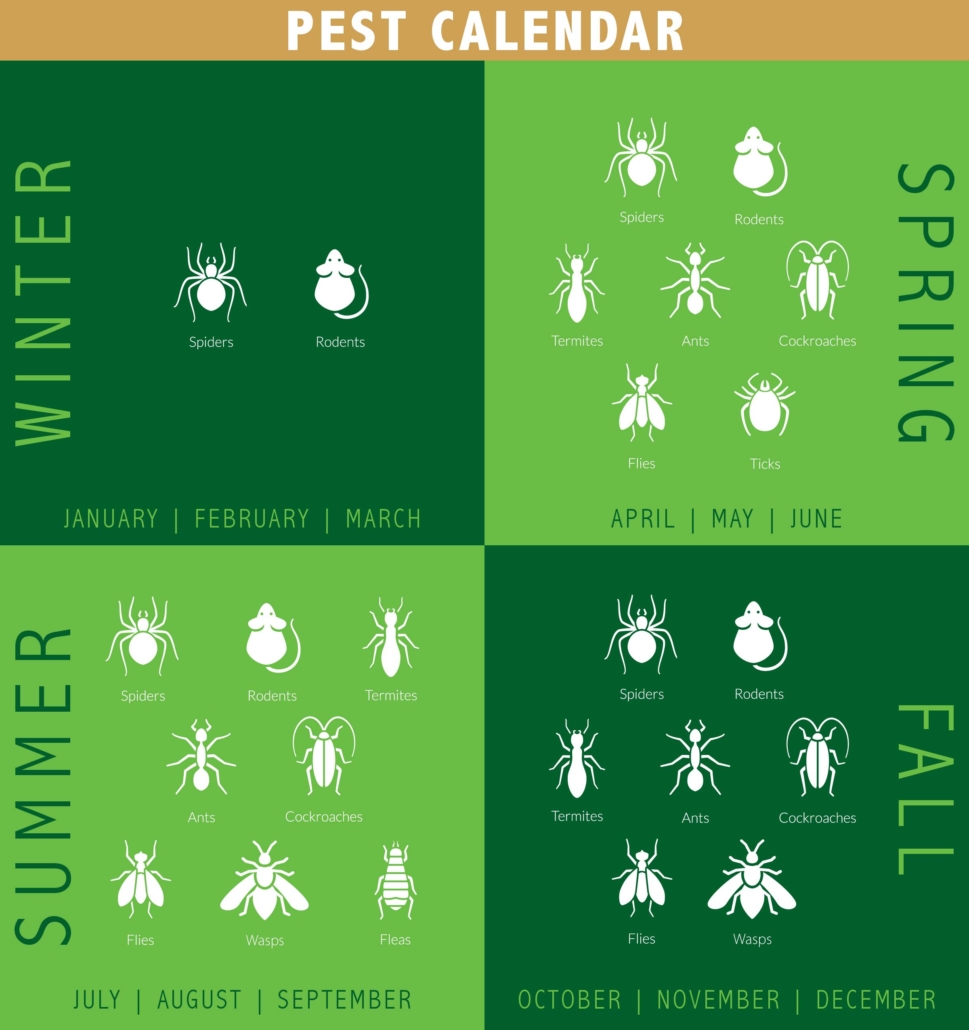RESIDENTIAL AND COMMERCIAL PEST CONTROL SERVICES
Pest control where you live can be a little nerve wracking. First, you acknowledge you have animals sharing your space that are not pets and need to leave. Second, you have to decide to try to get rid of them on your own or enlist help. On your own you seek out advice online from a YouTube specialist or from the hardware store or big box store associate who may know less about pests than any other item in the store. Or you can reach out to family and friends for help, until you realize that then your family and friend’s will know you have a pest problem.
Our business depends on solving your pest problems efficiently, effectively and with the least risk to anything not the target pest. We have been a leader in Integrated Pest Management, the combination of different techniques and strategies to control pests, since we started.

IDENTIFICATION
The most important part of any pest control service is to correctly identify the type of pest you are dealing with and get an idea of the size (scope) of the issue. Since most pests are constantly on the move from one area to another, try to save a sample or take a picture if you can get close enough. If you see evidence of the pest like droppings, chew marks, insect wings, try to leave them undisturbed until an inspector has had a chance to do an initial assessment. If you must pick them up, use a glove or paper towel to protect your hand and save them for the inspector in a zip lock bag. If you can’t be home or if it is a lawn or plant pest, use a marker like a Popsicle stick.
INSPECTION
Once your pest has been identified, we conduct an interior and exterior inspection to assess the level of activity and potential areas of damage. During the pest inspection we want to know about your tolerance level as it relates to having the pest in and around your home. If you have called a professional for help you have reached your “action threshold.” We also want to know if you have preferences for the different types of control methods we may employ. It will help us create a pest control service strategy that meets your needs.
SERVICE PLANS
We offer different levels of core services, and different service frequencies that may be possible based on a variety of factors. The type of pest, level of activity, site of infestation, tolerance level, type of property, and pest history of the property are all factors that determine the service frequency recommended. Services frequencies range from as frequently as weekly or twice a week for urban food service to a simple one-time service to remove a yellowjacket nest. Effective pest management should have frequent planned inspections and monitoring to prevent pest issues. We use integrated pest management to solve pest problems without relying on pesticides alone.
FOLLOW UP INSPECTIONS
Only a few pest issues can be solved with a single or one-time service. Those pests are yellow jackets, wasp nests, and fleas. All others require some type of follow-up service to be effective. We will schedule follow-up services as part of our planned pest management service to gauge the effectiveness of our strategy and execution. Follow-up service inspections are the most important part of pest control service to make sure existing issues are managed and future issues minimized.
Eliminate ants and stop them from entering your home.
Remove all cockroaches, seen and unseen.
Protect your yard and outdoor area from mosquitos.
Safeguard your home from structural damage and eliminate termites.
Keep your outdoors and family safe from ticks.
Maintain a clean and healthy home and eliminate rodents.
Eliminate spiders from your home, basements, and crawlspaces.
Safely remove stinging insect hives and nests.
LESS PESTICIDES. SMARTER PEST CONTROL.
Read Our Reviews
Don’t Just Take Our Word For It
What do our customers say about us?
Less Pesticides. Smarter Pest Control.
Residential Pest Control
Greenhow specializes in helping homeowners in the Greater Boston Area and renters with a wide variety of pest control problems. From ants and beetles to mice and, moths we are here to help you – – and do it in a manner that will not endanger you, your family or your pets.
Preventing pest problems is our primary purpose!
Doesn’t everyone have ants? Doesn’t everyone have mice? Doesn’t have to be that way when you trust your home to Greenhow Pest Control. Living with a pest issue can compromise your physical and mental well being. Pests leave waste that can lead to disease. Pests damage food products or your other belongings. Pests pester with their presence – sometimes leading to frustration and embarrassment.
Start with identification.
How do I solve my ant problem? How do I solve my mouse problem? Proper pest identification is the first step to effective pest management. Site sanitation, the second step, starts with you to reduce food sources and pest harborages or places pests can hide. The next step is to take control measures with baits, exclusion, pesticide applications and traps. The trained technical team, including Associate Certified Entomologists, at Greenhow, can help you with our integrated pest management service.
Covered pests and service programs.
We offer comprehensive quality pest control service for residential customers. Our covered pests include ants, cockroaches, carpenter ants, mice, rats, silverfish and spiders. Our service programs range from one-time services to monthly service. One-time service is for targeted pests like bedbugs, fleas, and wasps and yellowjackets. Quarterly service covers general pest control including ants and carpenter ants. Every other month service is offered for single-family detached homes with mice. All buildings with more than one unit, attached single-family homes, and service for rats and spiders are monthly service programs.
Commercial Pest Control Services
In your business, pests can be very damaging. In today’s environment where cameras are ubiquitous in every smartphone, the unfortunate arrival of a pest a moment that may be recorded and shared with others, to your detriment. A small pest issue can become a big deal quickly in the age of social media.
Team up with our team.
You know your business and should focus on it. We know how pests can impact your business. Our trained technical team in the Greater Boston Area makes protecting your business from pests their primary purpose.
Start with effective monitoring.
Our service starts with effective quality pest monitoring, accurate pest identification and targeted pest management programs to keep your facility pest free. You and your customers can have a profitable relationship with your pest-free facility. We service a wide variety of commercial facilities including: Multi-family homes, Apartment and Condominium Buildings, and Complexes, Bakeries, Food Processing Facilities, Food Service, Food Distribution, Manufacturing, including clean and pharmaceutical manufacturing, Industrial spaces, Offices, Restaurants from quick service to fine dining, and Warehouses. We offer reports for multi-location or large site managers to accurately view pest activity across one large or many smaller sites.
Covered pests and service programs.
Commercial facilities have specific pest issues beyond the basic covered pests. We refine our commercial programs to include industry-specific moths, flies, and beetles businesses encounter.
Pest Management – To Keep Them Away For Good
Comprehensive Pest Control
Greenhow Pest Management is a comprehensive approach to pest control, which emphasizes structural, environmental, biological, and mechanical methods to prevent pest populations from developing. This requires constant monitoring, and thorough inspections inside and outside of the structure to identify and remedy pest conducive conditions prior to an infestation occurring. Greenhow Pest Management is the logical extension of Integrated Pest Management, also a comprehensive approach to pest control, which relies on inside and outside inspections to identify and prevent possible pest infestations.
Why is it important to consider pesticide use?
Pesticides are designed to kill and control a pest. They may pose risks to non-targets or organisms they are not intended for simply by being used. Consider how and when to use a pesticide to reduce risks to non-targets, like people and pets.
The difference is…
The difference with Greenhow Pest Management is when a pest control material is needed, the preferred material is from the Environmental Protection Agency’s Reduced Risk Pesticide Initiative. Our Comprehensive Pest Control system uses a combination of non-chemical and chemical treatments to control pest populations and prevent re-infestation. We recommend a service frequency that meets your needs for our residential customers to ensure constant monitoring and prevention.









